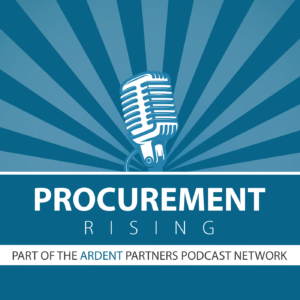Ardent recently completed its sixteenth annual CPO-themed market research study, “The State of Procurement & the CPO”, which is part of an ongoing dialogue that my team and I have had with Chief Procurement Officers (CPOs) and other procurement leaders for more than a decade. Over the next few weeks, we’ll be discussing the results from this year’s study in a series of articles on this site. If you’d like access to this report, make sure to register for our newsletter with a business email address.
Deliberate processes powered by rich insight that is drawn from clear context seem much more likely to succeed than other methods. Enterprise-level visibility into savings, spend, and performance is not universally held today. The simple fact is that it is more difficult to manage projects and allocate resources when faced with poor visibility into final results and uncertainty as to overall enterprise objectives. Beyond that, the difference between identified savings (63%), booked savings (42%, not shown), and implemented savings (41%, not shown) has the potential to create a gap between procurement’s perception of its impact and reality. In the past these breaks have undermined procurement’s credibility, most notably with the CFO.
These findings highlight a tremendous need for many procurement organizations to improve their visibility into spend, savings, and other key metrics. Fortunately, this necessity requires no invention. This is because over the next few years, a new type of procurement intelligence is going to enable CPOs to view their businesses differently and, by doing so, is going to force these CPOs to manage it differently as well. For procurement, the real catalysts of this intelligence are hiding in plain sight: better data analytics capabilities for greater visibility, better technology, and a more tech-savvy roster of procurement professionals including data science abilities. Procurement does not need to completely transform the way it sources, purchases, and manages supplier relationships and risk for the enterprise in order to scale its next peak. After all, digital transformation is relative and specific for each business function; what works well for sales and marketing probably could not, or should not, be replicated exactly as procurement’s own digital transformation model.
The focus should be on systems that increase intelligence and, in turn, identify the best opportunities, manage and support smarter decisions, and improve performance and agility across the value chain.
If you are interested in learning more about the key procurement and CPO data collected in our annual research study, consider listening to Ardent’s brand new “Procurement Rising” podcast series. Click below to listen to new episodes. The podcast is also available on Apple, Spotify, Stitcher, Google, or wherever you get your podcasts.



Pingback: TEM: Direct Spend vs. Indirect Spend | brightfinbrightfin